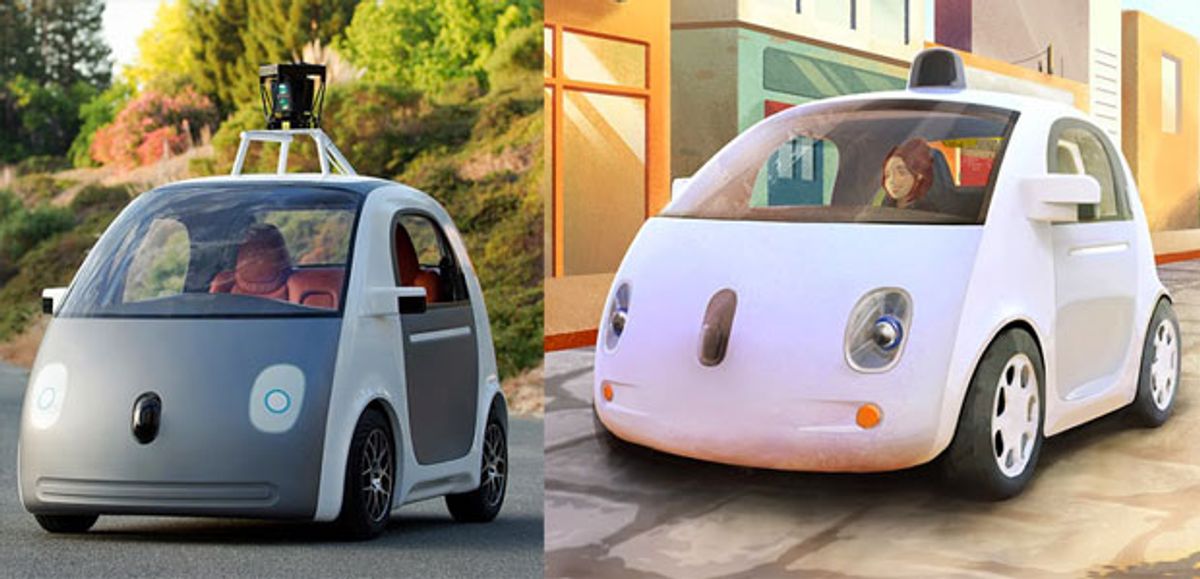Google's next self-driving cars will be custom-built prototypes with no steering wheels or control pedals, the company announced yesterday. The two-person test vehicles drive no faster than about 40 kilometers per hour. For situational awareness, they rely on a rooftop LIDAR system and appear to have additional sensors located where conventional cars have side-view mirrors. The company demonstrated one of the new prototypes in a parking lot during this week's Code Conference, Re/code reported.
Google's self-driving car project chief Chris Urmson told Re/code in a separate Q&A that after initial testing, the company would put some of the prototypes in the hands of outsiders for testing. Those testers will use their fingers to select the "go" button or the "stop" button. He added that Google will comply with California's just-approved rules for experimental self-driving cars (see our story last week "California to Issue Driving Licenses to Robots,"). That is unsurprising, since it helped to write them.
Nor does the move signal a major break with conventional carmakers. Urmson said in his announcement that the company intends to work with outside manufacturing partners, as it has with previous testbeds of its self-driving technology. Yet the company would not say which car maker was building its hundred or so planned electric prototypes, The Guardian reports. Perhaps that is because car makers are embarrassed by the Google-mobile's appearance as a cross between a golf cart and an amusement park ride.
Among other reasons for that look, the prototype's front end contains foam and a soft windshield in order to be more forgiving to other soft-bodied road users, such as pedestrians and cyclists. The idea of looking out for pedestrians is growing in popularity; the European car safety testing body NCAP has included pedestrian impact tests in its overall ratings since 2009.
By skipping ahead to a car with almost no driver controls, however, Google is showing that it cares more about how future self-driving cars will interact with the road and each other than the thorny question of how future drivers will interact with ever more automated cars. As I reported in my story "How Self-Driving Cars Will Sneak Onto Our Roads", one of the major obstacles for self-driving cars will be the graceful handover of control from human to robot drivers. Google, apparently, will leave that one to the car makers.
Lucas Laursen is a journalist covering global development by way of science and technology with special interest in energy and agriculture. He has lived in and reported from the United States, United Kingdom, Switzerland, and Mexico.



